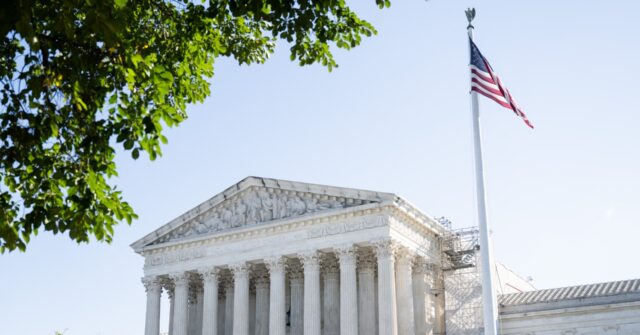The Supreme Court of the United States is set to hear oral arguments in a pivotal case, Garland v. VanDerStok, which challenges the Bureau of Alcohol, Tobacco, Firearms and Explosives (ATF) on its recent redefinition of what qualifies as a “firearm.” This case centers on the ATF’s Final Rule 2021-05F, which imposes new restrictions on parts kits and what are commonly referred to as “ghost guns.” This rule is significant because it alters the legal definition of a firearm to include “partially completed pistol frames,” thus expanding the regulatory reach of the ATF. By redefining the term “firearm,” the ATF aims to exert more control over these types of products, responding to what some lawmakers argue are loopholes that allow for untraceable guns to proliferate.
A crucial element of the ATF’s redefinition involves categories of gun parts, specifically those from manufacturers like Polymer80 and Lone Wolf. These items are considered to have reached a level of manufacture that qualifies them as “frames” and, consequently, as “firearms” under the Gun Control Act (GCA). The ATF asserts that even if these kits are not sold or marked with instructions for completion, they can be readily assembled or converted into functional firearms. This regulatory change has sparked considerable debate, with opponents arguing that such broad definitions infringe on Second Amendment rights and challenge long-standing interpretations of firearm ownership and manufacturing.
The case also raises important questions regarding the Administrative Procedures Act (APA), which contains guidelines for how federal agencies can promulgate regulations. The challengers, led by VanDerStok, contend that the ATF acted unlawfully through this unilateral change without the proper public input and due process required by the APA. Thus, Garland v. VanDerStok could set a significant precedent concerning the scope of federal agencies’ power to create regulations that impact individual rights and liberties, particularly concerning gun ownership and the definition of legally recognized firearms.
In a broader context, the Supreme Court’s recent ruling on the ATF’s bump stock ban serves as an important reference point for Garland v. VanDerStok. In that case from June 2024, the Court firmly rejected the ATF’s classification of bump stocks as machine guns, indicating that such devices do not meet the legal definition as proffered by the ATF. The ruling emphasized the importance of adhering to the statutory language established within the law, a principle that could resonate within the current oral arguments as the Justices consider whether the ATF’s redefinition constitutes an overreach of authority similar to their handling of bump stocks.
AWR Hawkins, an influential voice in the conversation surrounding Second Amendment rights, has highlighted the implications of these regulatory battles. As a well-respected columnist and analyst, Hawkins underscores the ongoing conflict between gun rights advocates and federal regulatory agencies like the ATF. He consistently emphasizes the need for clarity and adherence to established legal definitions, as the reinterpretation of such terms can significantly affect the rights of firearm owners across the nation. This reflects the broader sentiment of many who feel that the regulatory landscape regarding firearms is becoming increasingly complex and adversarial, raising concerns about individual rights.
As the Supreme Court prepares to deliberate on Garland v. VanDerStok, the outcome of this case could reverberate throughout the country, influencing not only the future of ghost guns and gun regulation but also how federal agencies wield their power. The challenge to the ATF’s authority could either reaffirm the agency’s regulatory capacity or impose essential checks on their ability to redefine legal terms without adequate public input. The implications of this case are far-reaching, as they touch upon fundamental questions of civil liberties, government overreach, and the rights afforded to citizens under the Constitution, making it a critical moment in the ongoing debate over gun control and Second Amendment protections.

